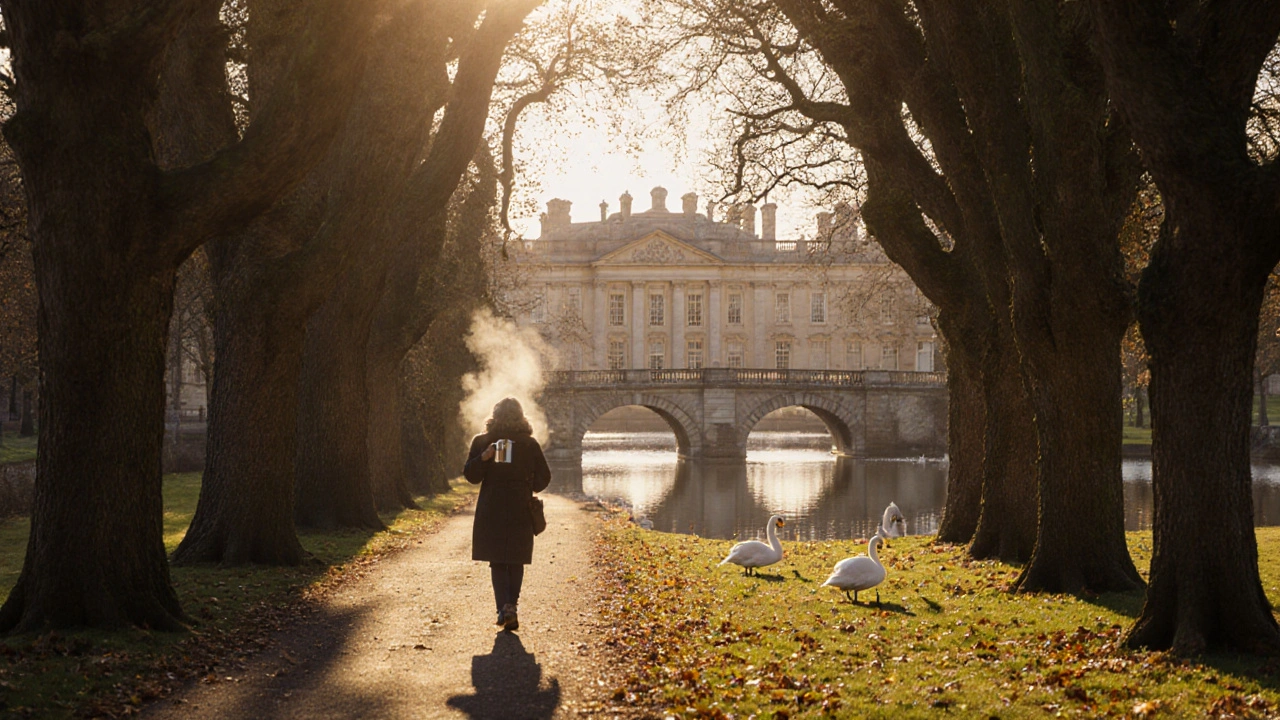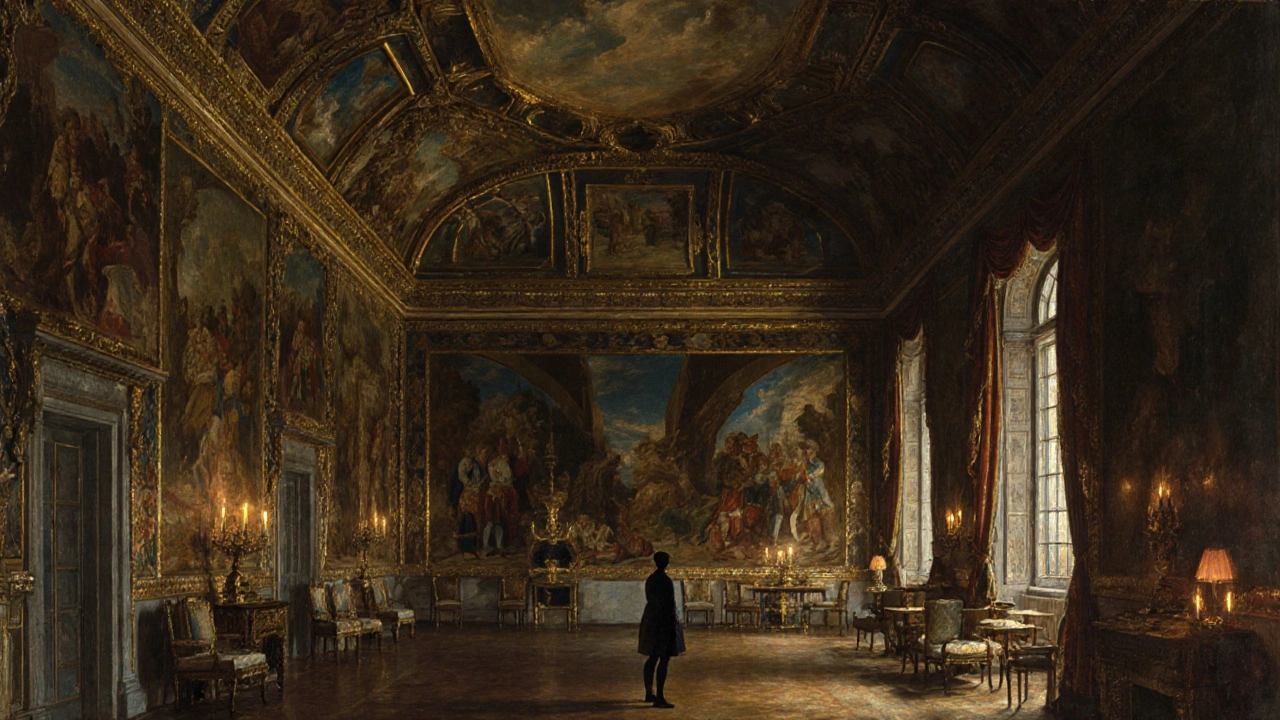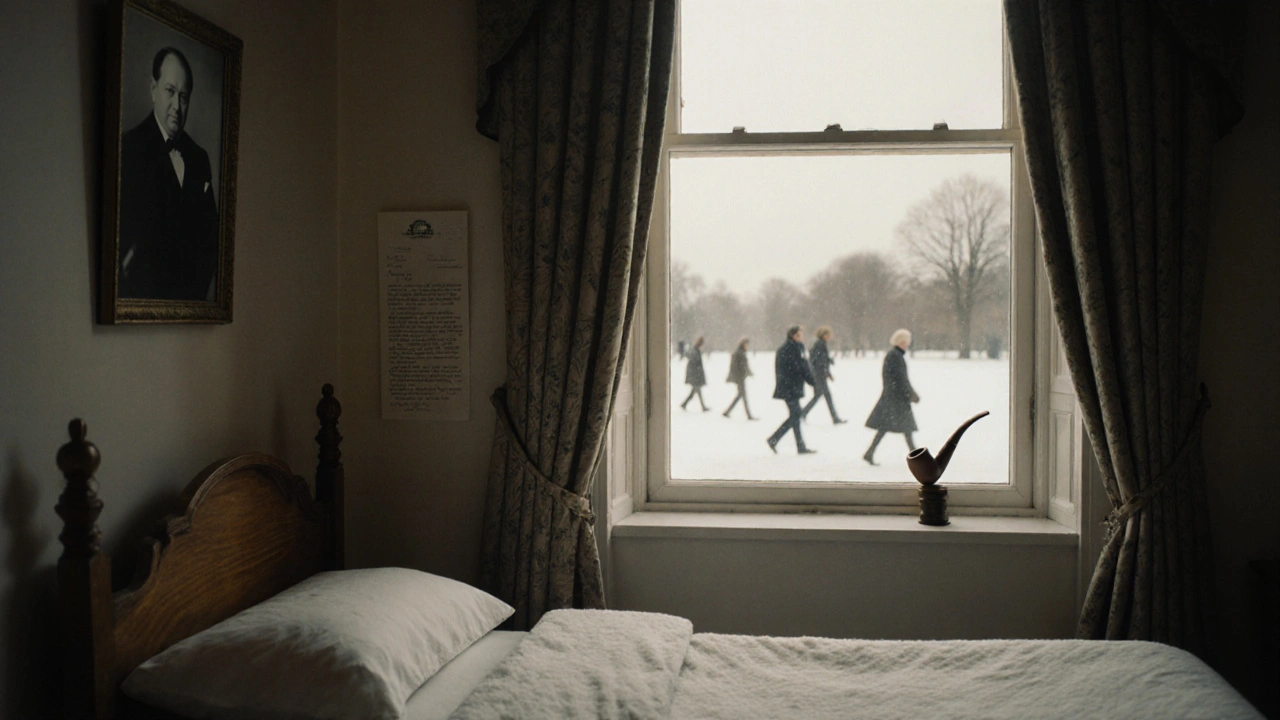
On a crisp November morning, just an hour’s drive from Manchester, you can walk through the same gardens where Winston Churchill was born, stand in the grand hall where royalty once dined, and lose yourself in a landscape so vast it feels like another country. Blenheim Palace isn’t just a tourist spot-it’s a living storybook of power, war, art, and family. And yes, you can see it all in one day.
Start with the Park: Nature Built for Kings
The moment you enter Blenheim, you’re not stepping into a garden-you’re entering a masterpiece of landscape design. The 2,000-acre park was shaped by Lancelot ‘Capability’ Brown in the 1760s, and it hasn’t changed much since. Think rolling lawns that slope down to a mirror-still lake, clumps of ancient oaks, and hidden paths that lead to statues of Roman gods and a towering column honoring the 1st Duke of Marlborough.
Most visitors rush to the palace, but skip the park and you miss half the magic. Walk the Grand Avenue-a 1.5-mile straight path lined with trees that frames the palace like a living painting. Bring a thermos of coffee and sit on one of the stone benches near the Grand Bridge. Watch the swans glide past. Notice how the light hits the water at midday. This isn’t just scenery-it’s engineered beauty, designed to impress and calm at the same time.
Inside the Palace: Power, Art, and Scale
The palace itself is the largest non-royal residence in England. Built in the early 1700s as a gift from Queen Anne to John Churchill, the first Duke of Marlborough, it’s a mix of Baroque grandeur and British stubbornness. You’ll see 187 rooms, but you’ll only tour about 30 of them. That’s still enough to feel overwhelmed.
Start in the Saloon, the heart of the house. The ceiling? Painted by Sir James Thornhill with scenes of the Duke’s military victories. The walls? Covered in tapestries woven from gold thread, worth more than most small castles. The furniture? Original, heavy, and ornate. No one here was trying to be subtle.
Don’t miss the Long Library. At 180 feet long, it’s longer than a football field. The shelves hold 10,000 books, many from the 17th century. You’ll spot a bust of Churchill here too-not because he lived here, but because he was born here. And that’s where the story gets personal.
Churchill’s Roots: A Future Prime Minister’s First Breath
Winston Churchill was born in Blenheim Palace on November 30, 1874. He didn’t grow up here-his parents were distant, and he was sent away to boarding school early-but he always called it home. His birth room, a small chamber on the first floor, is preserved exactly as it was. The bed is tiny. The walls are plain. No one would guess that this quiet room gave birth to one of the 20th century’s most powerful voices.
Downstairs, in the Churchill Exhibition, you’ll find his childhood letters, his wartime telegrams, and the pipe he used during the Blitz. There’s a video of him speaking at the House of Commons in 1940, and beside it, a photo of him as a boy, grinning in the palace gardens. He hated being called ‘Lord Winston’-he was proud of being the son of a duke, but he never let it define him. That tension-between privilege and grit-is what makes his story here so real.

What to See in One Day: A Realistic Timeline
You can’t do everything, but you can do enough. Here’s how to make the most of a single day:
- 9:00 AM - Arrive early. Parking is free, but fills up by 10:30. Walk straight to the park and take the path to the Grand Bridge.
- 10:30 AM - Enter the palace. Start with the State Rooms, then head to the Churchill Exhibition.
- 12:30 PM - Lunch at the Orangery. Try the beef and ale pie-it’s the same recipe used in the 1800s.
- 1:30 PM - Walk the Water Terraces. These formal gardens are perfect for photos, especially with the fountain spraying behind you.
- 3:00 PM - Visit the Pleasure Gardens. The maze is fun for kids, and the butterfly house is surprisingly good.
- 4:30 PM - End with a walk back through the park. Catch the sunset over the lake.
Buy a combined ticket online before you go. It saves £5 and skips the queue. The palace closes at 5 PM in winter, so don’t linger too long in the gift shop.
Why This Trip Works: More Than Just a Pretty Place
Blenheim isn’t like other stately homes. You won’t find dusty mannequins in period dress or guides reciting dates from a script. The staff here know their history-and they’re not afraid to tell it raw. One volunteer told me, ‘The Duke built this to show off. Churchill lived here to escape.’ That’s the heart of it.
It’s a place where aristocracy meets grit. Where war heroes and world leaders walked the same halls. Where nature was bent to serve beauty, and where a boy born into privilege became the man who refused to surrender.
If you’ve ever wondered what it feels like to stand where history was made, this is your answer. You don’t need to be a history buff. You don’t need to know the difference between Baroque and Gothic. Just show up. Walk. Look. Listen.

Practical Tips for Your Visit
- Best time to go: April to September for gardens. October to February for fewer crowds and cozy indoor spaces.
- Wear good shoes: The park is huge. Cobblestones, grass, and gravel paths add up fast.
- Bring a coat: Even in summer, the lake wind bites. In winter, it’s freezing.
- Food options: The Orangery is pricey but worth it. The Courtyard Café has decent sandwiches and tea. Bring snacks if you’re on a budget.
- Accessibility: The palace has lifts and ramps. The park is mostly flat but unpaved in places. Wheelchairs and mobility scooters are available to borrow.
Train travelers: Take a train to Oxford, then catch the 20 or 21 bus to Blenheim. It’s a 20-minute ride. Driving from Manchester? Use the M1 and A40. Exit at Woodstock. The signs are clear.
Can you visit Blenheim Palace in one day?
Yes, absolutely. Most visitors spend 5 to 7 hours here. You can see the main palace rooms, walk the park, and explore the gardens without rushing. Start early, plan your route, and prioritize what matters most to you-whether that’s Churchill’s birth room, the lake views, or the tapestries.
Is Blenheim Palace worth the entrance fee?
If you care about history, architecture, or just being somewhere that feels truly special, then yes. The ticket includes access to the palace, park, gardens, and exhibitions. Compare it to other UK heritage sites: it’s pricier than a small museum, but far more immersive. You’re not just looking at objects-you’re walking through a living legacy.
Are there free areas at Blenheim?
The park is technically free to enter, but you’ll need to pay to cross the main gates. There’s a small public footpath that runs along the edge of the estate, but you won’t see the palace or the famous gardens from there. If you want the full experience, the ticket is worth it.
Is Blenheim Palace good for kids?
Surprisingly, yes. The maze is a hit with children, and the butterfly house feels like a jungle adventure. The park is perfect for running around, and the toy train ride (seasonal) is a favorite. The palace itself can be overwhelming for young kids, so focus on the outdoor areas if they’re under 8.
What’s the best photo spot at Blenheim?
The view from the Grand Bridge, looking back at the palace with the lake in front, is the classic shot. For something less obvious, head to the Italian Garden at golden hour-the fountains reflect the palace in perfect symmetry. If you’re with kids, the maze’s center platform gives a fun, elevated view of the whole garden.
What to Do After Your Visit
Woodstock, the village right next to Blenheim, is worth a stroll. Stop at the George Hotel for a pint of local ale. The pub’s been around since 1675, and the beer is poured the same way it was when Churchill was a boy.
If you’re driving back to Manchester, consider a detour to Chatsworth House or the Cotswolds. Or just head home and watch a Churchill documentary. You’ll see him differently now-not as a statue or a name on a textbook, but as a boy who once ran through these gardens, dreaming of something bigger.